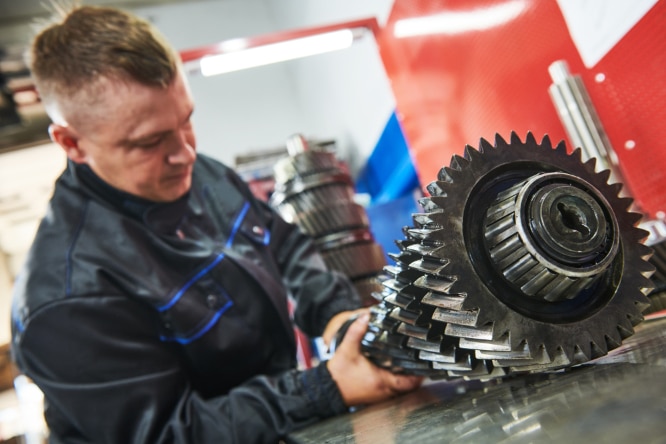Top 5 Most Frequent Industrial Gearbox Faults and Errors
You don’t need to know your gearbox inside and out to be able to get to the bottom of the issue. Most of the time, it’s going to be one of the following faults or errors at the crux of the issue. Here are some of the symptoms to pay attention to, common gearbox problems, and what they might mean.
Is the Machinery Making Unusual Noises?
Fault gearboxes can often start making noises out of the ordinary, whether it’s by parts that are grinding together, rattling, or otherwise not working as they’re expected to. Parts can wear, over time, getting noisier as they do. Bearing failure is a particularly common cause of this, but gears and shafts can be susceptible to this failure, as well. If it’s a low-pitched rumbling, it’s likely related to the bearings, while motor mounts tend to make banging noises when they’ve come loose.

Does the Machinery Tend to Overheat?
If you’ve noticed a sudden change in the temperature of your machinery, especially between the housing and shaft, then it could be that it’s overheating. A lack of effective lubrication is a very common cause of this. Sometimes, the bearings can be on too tight, which creates more friction and heat than the gearbox is equipped to deal with, as well.
There are other signs that it might be overheating, as well, such as smoke coming from the seals and shafts, discolouration and melting of the plastic parts, and sudden failure. Allowing your machine to overheat can cause parts to lose their effectiveness much sooner than they should, so you should aim to prevent it as best as possible.
Are There Any Cracks in the Gearbox?
One of the most noticeable problems affecting your gearbox will be the appearance of cracks or other visible damage on its surface. There is some chance that this damage might just be superficial, or caused by some knock or bump it sustained in the past. But that doesn’t mean that the damage is only surface-deep, either.
Cracks that don’t have a discernible cause are usually caused by too high a frequency of vibrations, usually due to the speed and torque of the gearbox being higher than usual. This might be due to loose or broken mounted parts like gear teeth which then vibrate a lot harder, which can damage the parts surrounding them. This issue needs to be looked at as soon as possible.
Is the Gearbox Showing Signs of Wear and Misalignment?
Every machine is going to experience signs of wear at some point. Enough use can start to see the alignment of the gearbox and its parts changing slightly. Gearboxes experience vibration as well as heat expansion. Sometimes, parts were simply installed wrong and the alignment issues will get worse over time.
Sometimes, these parts can be realigned with relative ease. But you had better do it sooner rather than later, as these parts coming out of alignment can lead to spreading damage if they’re not treated.
Do You See Any Oil Leaks?
Oil leaks are a common sign, and they usually first appear around the shaft seals. If the oil is coming out, it also means that dust, air, and dirt can get into the machine, causing problems. Faulty gaskets can also lead to oil leaks, so check your oil levels to see if there’s a concern worth taking a closer look at.
With the tips above, hopefully, you’re able to get to the bottom of the issues plaguing your gearbox and get things up and running again. When that’s not the case, however, or you can’t notice any of the above signs of common problems, such as oil leaks or gearbox-bearing failure symptoms, then you might want a qualified expert to take a closer look.
Bellcliffe Engineering has been helping businesses find the help they need with metal roll tooling for years, whether it’s giving them the know-how to diagnose their faulty machinery, or with more hands-on services like our gearbox refurbishment offerings. If you’re in need of a little extra help, don’t hesitate to get in touch with the team today.
Whether it is worth repairing an industrial gearbox or not depends on several factors:
-
Age of the gearbox: If the gearbox is relatively new and has not experienced significant wear and tear, it may be worth repairing. On the other hand, if the gearbox is old and has undergone multiple repairs in the past, it may be more prudent to replace it.
-
Availability of parts: If replacement parts for the gearbox are difficult to find or are no longer available, repairing the gearbox may not be feasible.
-
Downtime: If the gearbox is critical to your operations, the downtime associated with repairing or replacing it should be considered. If the downtime is expected to be significant, it may be more cost-effective to repair the gearbox than to replace it.
Read more ...